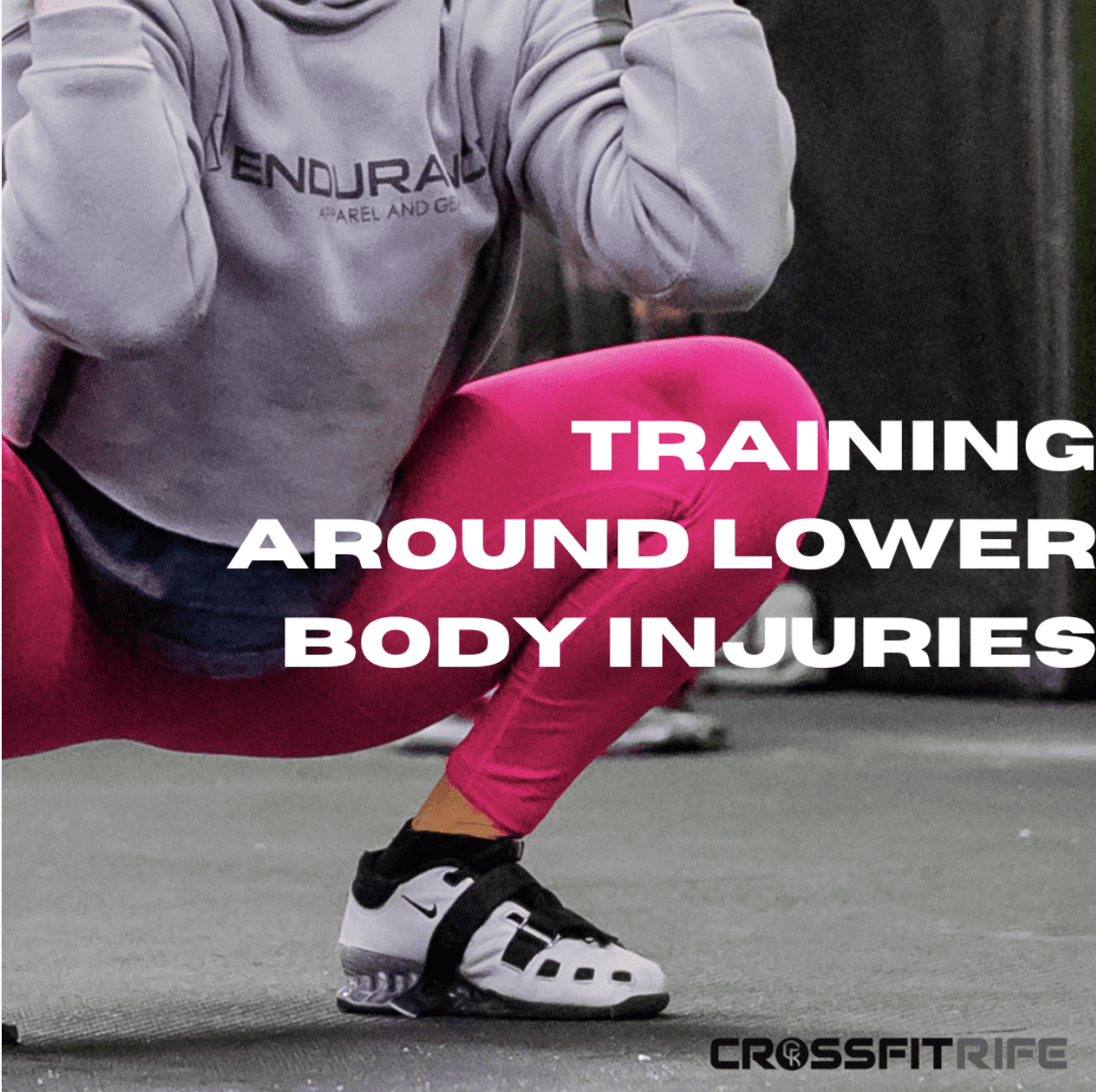As a coach at CrossFit Rife, we often see clients dealing with lower body injuries such as ACL tears, meniscus tears, and ankle sprains. These types of injuries can make it difficult to perform many of the exercises in a typical CrossFit routine, and it can be tough to navigate through. However, just like upper body injuries, it’s important to remember that just because you have an injury, it doesn’t mean you have to stop training altogether. With the right modifications and guidance, you can continue to build strength and improve your overall fitness while healing from your injury.
Understanding the Injury
The first step in training with a lower body injury is understanding the nature of the injury. An ACL tear, for example, is an injury to the ligament that connects the thighbone to the shinbone and can cause pain, swelling, and instability. A meniscus tear is an injury to the cartilage in the knee that can cause pain, swelling, and stiffness. And ankle sprains occur when the ligaments that support the ankle are stretched or torn and can cause pain, swelling, and instability.
It’s important to see a doctor or physical therapist if you suspect you have a lower body injury, as they can properly diagnose your injury and develop a treatment plan. Depending on the severity of your injury, you may need to rest or engage in physical therapy to promote healing.
Training Around the Injury
Once you understand the nature of your injury, you can start thinking about how to modify your training to work around it. The key is to focus on exercises that target muscle groups other than the injured area, while also using proper form and avoiding movements that may exacerbate your injury.
For example, if you have an ACL tear, you may want to avoid exercises that put a lot of stress on the knee, such as squats and lunges. Instead, you can focus on exercises that target your upper body, such as rows and push-ups. You can also engage in exercises that promote core and hip stability, such as planks and bird dogs.
If you have a meniscus tear, you may want to avoid exercises that involve a lot of twisting and reaching, such as kettlebell swings and snatches. Instead, you can focus on exercises that target your upper body, such as rows and push-ups. And you can also engage in exercises that promote knee and ankle stability, such as calf raises and leg press.
And if you have an ankle sprain, you may want to avoid exercises that put a lot of stress on the ankle, such as box jumps and running. Instead, you can focus on exercises that target your upper body, such as rows and push-ups. And you can also engage in exercises that promote ankle stability and mobility, such as ankle pumps and heel walks.
Working with a Coach
When training with a lower body injury, one of the most important things you can do is work with a coach. A coach can help you develop a personalized training plan that takes into account your injury and goals. They can provide guidance on how to modify exercises to work around the injury, and provide feedback on form to help prevent further injury.
At CrossFit Rife, we understand the importance of working with clients to help them achieve their goals, regardless of injuries. And that’s why we always make sure to take into account any injury or limitation that our clients may have, and create a customized plan that enables them to continue training safely. We work closely with our clients to monitor their progress, provide modifications as needed, and help them regain strength and function in the injured area.
It’s important to keep in mind that healing from an injury takes time and patience, so be consistent in your training, listen to your body, and communicate with your coach. The goal is to be able to continue to make progress in your fitness while also giving your body the time it needs to heal.
Remember that injuries happen, but that doesn’t mean you have to stop working towards your goals. With the right guidance and modifications, you can continue to train and build strength while healing from your injury. If you have any questions or concerns, don’t hesitate to reach out to us. We’re here to help and support you on your fitness journey.
At CrossFit Rife, we are dedicated to help our clients to achieve their goals and maintain their fitness even when setbacks happen. We will be providing different educational series, stay tune for more!






